Here's a quick summary of the top things to do in Cusco, with great visuals:
Ever wondered what to do in Cuzco besides Machu Picchu?
Or things to do around Cusco?
Looking for fun or even free activities?
Many people will say Cusco is the most touristic place ever (it’s true) and shun it, but that is one of the reasons I love it there.
Touristic cities are brighter, more colourful, and usually safer. These may not seem like attractive enough reasons for you, but after being on a continent with very similar history and architecture long enough, you’ll appreciate these subtleties.
Touristic cities also have more things to do. Whether you have 36 hours in Cusco or 5 weeks like I had, here are some points of interests in Cusco, Peru. I guarantee you will find some hidden gems.
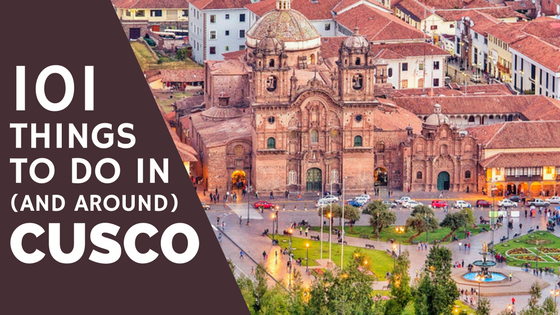
Click Here for a Sneak Peak
Things to Do In Cusco
Fun Things to do In the City
1. Free Walking Tour Cusco
The first thing I’d recommend people to do when visiting a major city is to check if there are any Free Walking Tours.
Free Walking Tours are a good way to get to know the orientation of the city and how to use the transport system, to learn the history and customs of the city, find out where the locals hang out, taste some national food and even make some friends.
The one at Cusco even brought us to an old Inca palace!
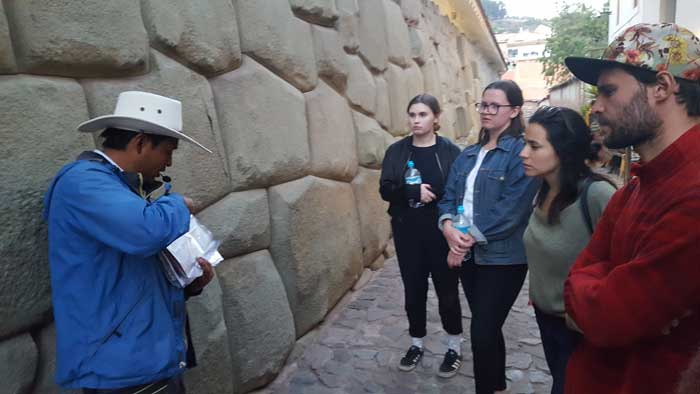
There are many Free Walking Tours at a touristic city like Cusco and one I’d recommend (and the one I went on) is www.inkanmilkyway.com
2. Cusco Sightseeing Bus
If walking is not your thing, you can opt for the Cusco Sightseeing Bus.
Unlike the more common hop-on-hop-off bus in many cities, you remain on the open-top bus for most of the journey. This is more of a sightseeing ride.
The ride lasts around 2 hours and brings you to the highlights of Cusco: Plaza de Armas, the cathedrals, the principal street, Monument of Pachucutec, to the ruins outside of Cusco and up to the white statue of Christ.
Guides on board the bus speak in both Spanish and English. You pretty much sit back, relax and enjoy the views of this magnificent city!
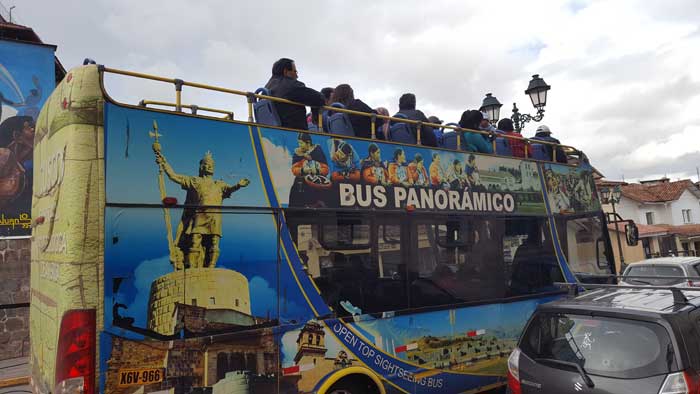
The Cusco Sightseeing Bus leaves everyday at 5 different timings, includes a pick-up from your hotel and costs PEN $20. More information can be found here: http://www.cuscosightseeingbus.com/
3. Wander Around Cusco
Notice the Inca influences as you wander through the cobblestone streets.
Soak in the history and atmosphere of the Inca empire with the numerous monuments.
Climb up to a viewpoint or two and admire the nightscape of the semi-modern city.
Get lost among the several plazas, churches and palaces.
Did you know that Cusco was planned in the shape of a puma?
No wonder it was declared a UNESCO World Heritage Site in 1983.
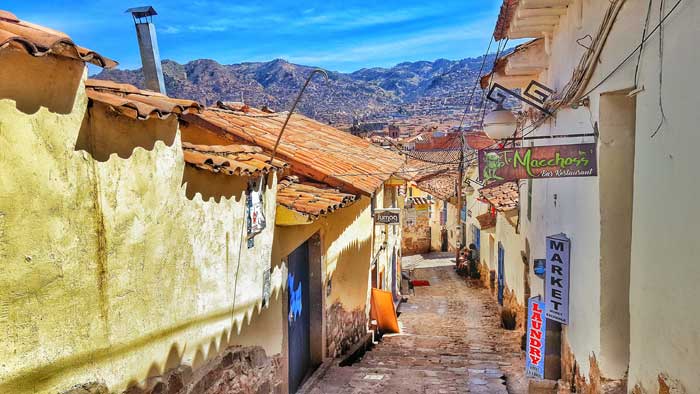
4. Plaza de Armas Cusco
There is a main square at almost every single city and every single town in South America and usually I wouldn’t mention it. But the Plaza de Armas in Cusco is different.
Besides being vibrant, beautiful and photogenic, it has a significant history to it.
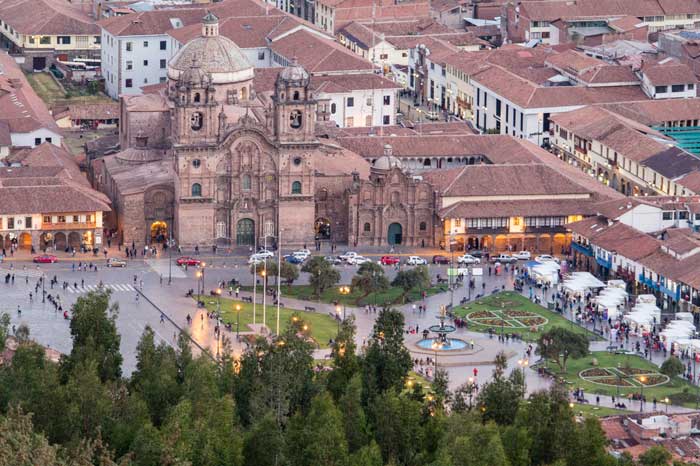
Photo: Victor Belloti
It served as the exact centre of the mighty Inca empire that stretched from Colombia all the way to Argentina and Chile, and earning Cusco the name: the naval of the world.
Ceremonies, festivals and even executions were carried out here. The most famous is the execution of the last Inca Tupac Amaru on this very square.
Today, it serves as a place of gathering for locals and tourists alike. If you have nothing to do, come here and people watch!
5. Visit an Old Inca Palace
If you walk around Cusco, you’ll notice that many buildings have two distinct architectural style: grey neatly stacked rectangular stones at the bottom and a more modern, painted style at the top.
The grey stones at the bottom are the remains of old Inca buildings, and many ‘new’ important buildings are built upon the foundations of prominent Inca buildings like old palaces.
Many of these palaces were destroyed beyond recognition but one that remains relatively visible is the Palacio Inka del Kusikancha. You can clearly see the layout of the palace in a neatly planned grid.
The abovementioned walking tour (http://www.inkanmilkyway.com/) brings you to this Inca Palace and the guide shares about the history and the architecture of this palace. It is worth a visit!
6. See the Twelve-Angled Stone
The Incas were well-known for their engineering and architectural prowess. Their structures often feature perfectly cut and shaped stone that are closely fitted without mortar.
The best known example is the Twelve-Angled Stone located on Hatun Rumiyoc Street and is considered a national heritage object. Lauded for its perfect assembly, it is said that not even a sheet of paper can fit between the stones!
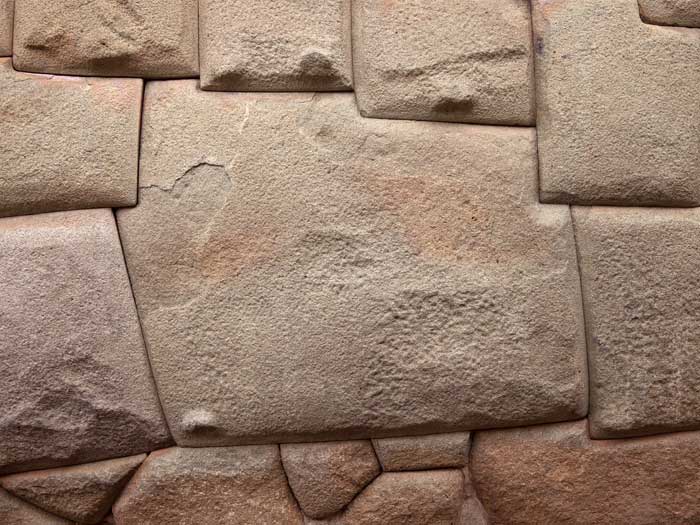
It is a very popular spot in the city so be prepared to squeeze with others along the narrow street. It’s amusing to see many people taking selfies with a dull grey wall!
7. Check out San Blas Neighbourhood
A short walk from Plaza de Armas is the charming and picturesque neighbourhood of San Blas, an increasingly popular barrio with tourists.
It is lined with street vendor selling colourful trinkets; artists’ studios and artisans’ workshops; cafes, bars and restaurants; and other colourful haunts that tourists love.
On weekends, the Plaza of San Blas comes alive with stalls with unique souvenirs. An interesting one is the Incas vs Spanish chess set.
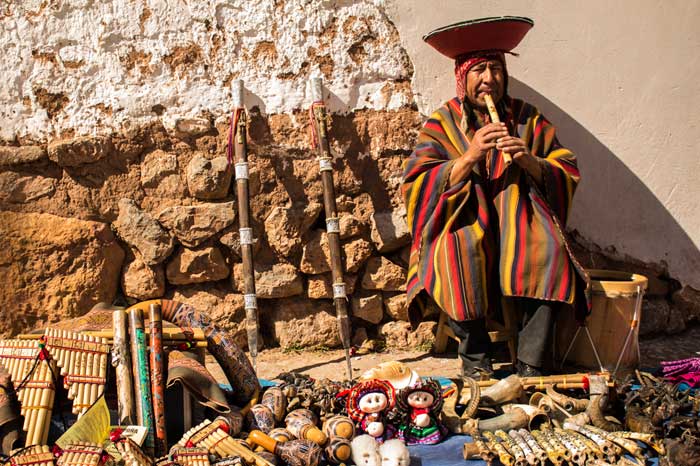
Photo: Victor Belloti
There is also a viewpoint that provides a spectacular panoramic view of the city – especially beautiful at night.
8. Eat at the San Pedro Market
A great way to experience local food is to eat at the local market.
Cheaper than restaurants, the San Pedro market draws locals and tourists alike. In fact, it has become so popular with tourists that the signage/menus include English (though the vendors couldn’t speak it).
San Pedro market not only serves as an eating place, it is also a wet market that sells everything from fruits & vegetables, meat, dried products and even ‘natural aphrodisiac’.
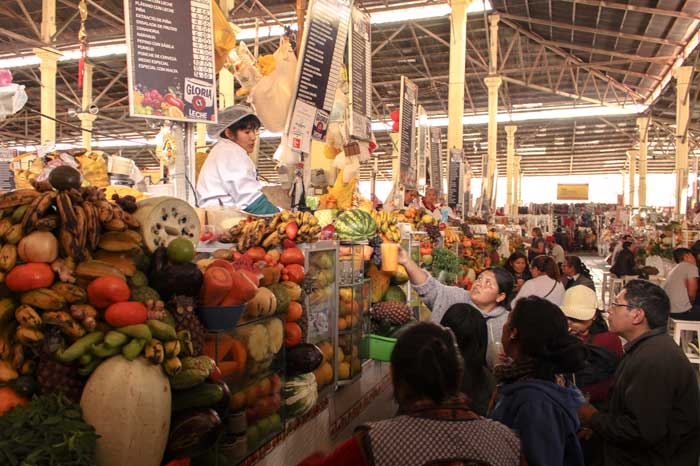
Photo: Victor Belloti
Furthermore, it triples as an artisanal market, selling colourful souvenirs, bags and Andean-styled clothes. I got my jeans and bag fixed here too.
9. Eat Locally at the Wanchaq Market
If the San Pedro market is too touristy for you, head over to the Wanchaq market.
The Wanchaq neighbourhood is a short 10-15min walk from central Cusco, near enough to the action but far away from tourist traps.
The market is as local as you can get: the lower level sells everyday items from dog food to batteries to brooms and brushes and the second level is the market itself. The only colourful stuff you find here is the fruit stall.
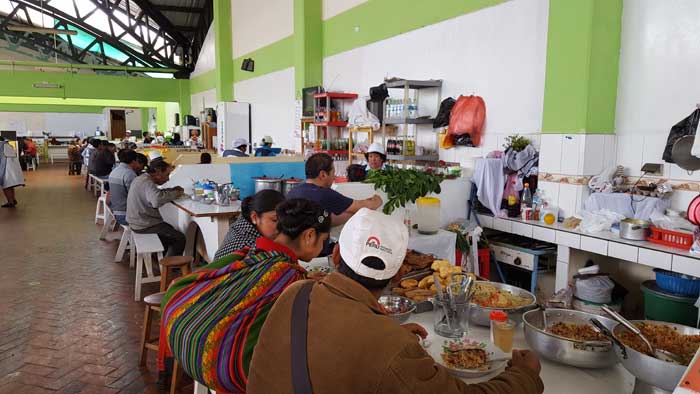
I was the only foreigner when I ate there and the food is even cheaper than at San Pedro market!
10. Buy Colourful Andean-Themed Souvenirs
Many places in South America have artisanal stalls and even more so in Cusco.
Walk along the main avenue – Avenida del Sol – and you’ll see numerous stalls that are home to everything colourful: ponchos and bags, alpaca jackets and beanies, jewellery and shot glasses… you name it. A shopping haven for the shopaholics!
Similarly, you’ll find individual vendors carrying a whole load of winter-wear along the streets of Cusco, hoping to turn their skills into a profit.
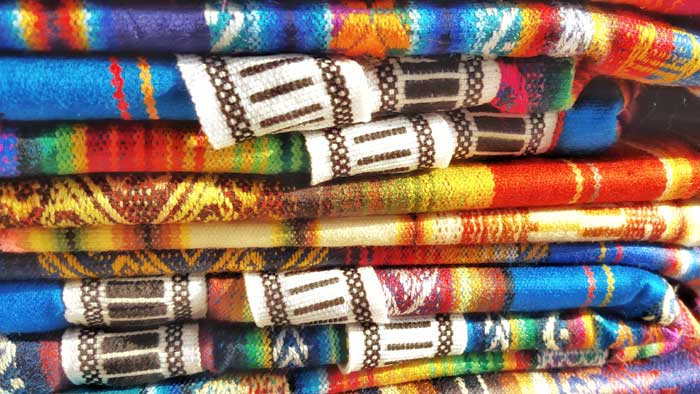
Practice your bargaining skills and stock up on those Peruvian presents!
11. Join in the Street Parades and Festivals
Latin America knows how to party. They have a festival for every major holiday and a street parade for any reason they could think of.
Stay in Cusco for a while and you’ll definitely see a street parade.
Kids wear colourful costumes and adults dance in cohesion while music plays in the background. Rain or shine, they continue. The locals – no matter how many they’ve seen – are supportive and enthusiastic, usually creating a human jam on the streets.
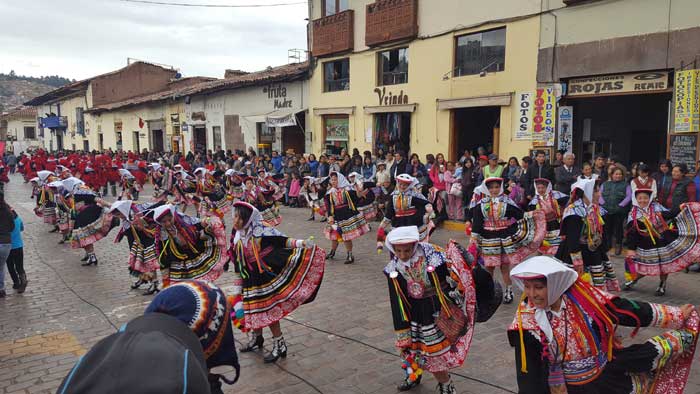
If you’re lucky, there might even be fireworks!
12. Take a Photo with a Baby Llama
One sight that is pretty common on the streets is the women dressed in indigenous clothing carrying a baby llama in their arms.
They make an extremely photogenic combination and they are smart enough to capitalize on that. They’ll offer you a photo op in exchange for a small tip.
Sometimes, instead of old women, little girls in colourful costumes with the llamas walk up to you instead.
I was tempted many times but llamas are a common sight for a long term traveller in South America like me, and it was only because of that I was able to resist.
13. Express Your Artistic Side and Sip a Wine
If you have some free time, why not go for an artist-led painting session in the countryside with rare views of snow-capped mountains, Inca ruins and colours of Cusco?
While you’re doing that, indulge in a fine selection of South American wines. What could be a more relaxing afternoon?
Carnaval Wine & Painting offers multiple packages and they have great reviews on Tripadvisor. Make a reservation here: https://carnavalpaint.com/
14. Pay Your Respects at the Almudena Cemetery
If you’ve visited Buenos Aires or Santiago, you’d know that certain cemeteries in South America give a different meaning.
Yes, they house the dead but they are also attractions in themselves. They are more akin to museums for their significance, aesthetics and local legends.
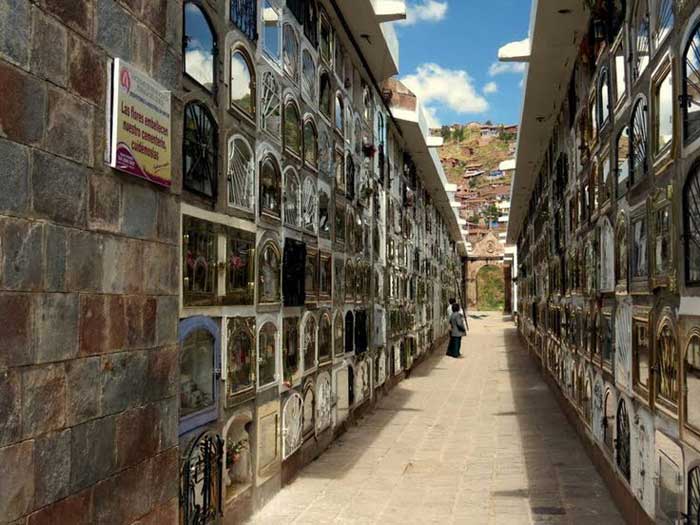
Like its two famous counterparts in Argentina and Chile, the Almudena Cemetery in Cusco is also an extravagant and architecturally beautiful resting place. Famous personalities are housed here and many festivals are celebrated here. Some guides call it “the happiest place in Cusco.”
It is a 30-45 min walk from Plaza de Armas.
15. Watch a Football Match in Cusco
Football is HUGE on the continent.
When the national team plays a game, the whole country takes a break. I was once in a Bachata class on a match day, only one local turned up.
Walk up to any viewpoint of Cusco and you can see the outstanding stadium Estadio Garcilaso, a 15-20 min walk from the main plaza, and has a capacity of 40000. The local team is Cienciano and ask any local about the fixtures, I’m sure they’d know.
Did you know on November 15 2017, Peru secured the final seat for World Cup 2018? I wasn’t physically in Peru but I could sense the passion of the entire country on my social media feed.
16. Soothe Your Muscles with a Relaxing Massage
As with many touristic cities, one of the most annoying encounters is the incessant offerings of “massage, sir, massage?”
I get that many times each day as I walked along the streets of Cusco.
However, if you do enjoy an occasional massage, there are endless options. Just walk around Plaza de Armas. A full-body massage after one of the many difficult treks around Cusco is probably one of the best feelings ever.
17. Get Your Shoes Shone Like a Boss
A common sight around Cusco the number of shoeshine boys (or men) cleaning the shoes of tourists and locals decked in suits.
Just sitting alone by a bench in the parks will have you approached by a handful in an afternoon. I haven’t had one, but I saw it in action on the bench beside me.
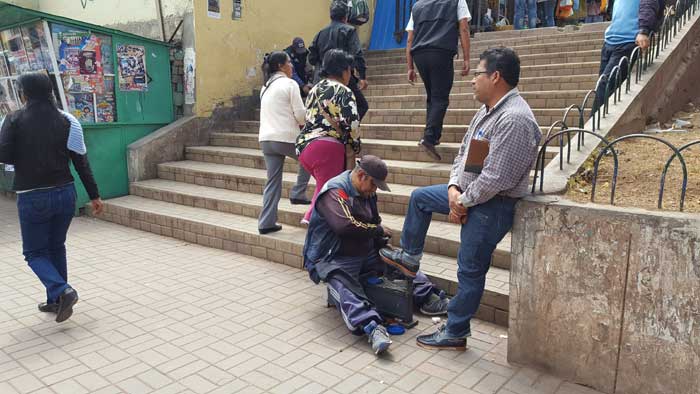
The shoeshine boy transformed browned, dusty sneakers to a clean, dark shade. It wasn’t even a leather shoe!
These men are legit.
18. Study Spanish in Cusco
Peru (together with Bolivia) is touted as one of the best places to learn Spanish in South America, due to their rather neutral accent and relatively slower pace of speaking.
There are numerous Spanish schools in Cusco and many offers housing and weekly activities. Prices vary according to group sizes and packages.
I studied a week in Proyecto Peru in Cusco. It is a well-organized school that also offers skype lessons if you wish to continue classes when you get home. I particularly liked how easy it was for me to make friends in the school and their weekly activities were fun.
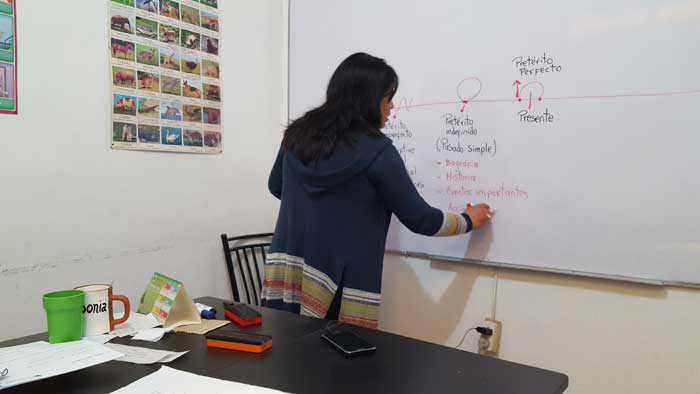
Besides Spanish classes, Proyecto Peru also offers volunteering opportunities, internships and a very value for money Spanish & Salsa package (which I signed up for). Check out their professional website at https://www.proyectoperucentre.org/
19. Contribute Back by Volunteering
Peru is a popular place for volunteering and Cusco, being the epicentre of activities, is the top choice for volunteers.
I met many volunteers during my time there. Some work at orphanages, some at hospitals - as a midwife or a doctor’s assistant. Others build houses and take care of animals while a few make use of their marketing talents.
There are many organizations and a quick Google search throws up many options. Many Spanish schools also provide volunteering opportunities and they help arrange you to stay with a local family, if you desire.
Most organizations require you to pay a fee (which you may or may not agree with). Proyecto Peru, the Spanish school I attended, is the only one I know of which doesn’t charge you a fee. You can read more about it here: https://www.proyectoperucentre.org/volunteer/
20. When in Latin America, Learn Latin Dance
Cusco is a good place to learn to dance Salsa and classes usually include locals and tourists.
I signed up for a Salsa class with Salseros Cusco but switched to Bachata (a slower, more sensual dance) as I was terrible hehe. I LOVED dancing bachata at Salseros Cusco.
The instructor Cesar was funny and patient, and I ended up staying for 3 weeks! The classes are extremely affordable and fun, and was the highlight of my stay in Cusco. I highly recommend taking a dance class in Cusco. Check out their Facebook page here.
21. Dance the Night Away in the Clubs
If you’re not ready to commit to a dance class, fret not! There are FREE Salsa and Bachata classes in the popular night clubs in Cusco.
And don’t worry, they are for beginners – everyone is as bad as you (rather, me)! They usually start at 9pm and by 11, the club is packed with beginner-level tourists.
The popular clubs among gringos that offer free dance lessons are Mama Africa, Inka Team and Mythology. All are around the main square.
Pro tip: If you go slightly later (10 or 11pm), club promoters standing outside the clubs hand out free drink coupons. Get one, have a free drink, leave and get another for the other clubs.
22. Party It Out with Other Travellers at Wild Rover
Wild Rover is a hostel and a bar/club all in one.
There seems to be an event each night of the week and a reason to party every moment. Full Moon Party, St. Patrick’s Day, Thanksgiving…you name it, they have it.
I was there during the Mayweather vs Mcgregor fight and the entire bar was cheering and booing. The atmosphere was intense and awesome.
You don’t have to be staying there to enjoy the bar. I did not stay there but still had a number of enjoyable nights there with friends. Among the things to do in Cusco at night, this is probably the most fun I had.
Yours truly makes a cameo here at 0:08.
Check out their Rehab Sundays where you can enjoy a beer while sliding down a huge colourful bouncy castle! See their Facebook page for all the events lining up here.
23. Sing Your Lungs Out at a Karaoke
Believe it or not, even though I’m from an Asian country, my first time at a Karaoke was at Cusco. It was during one of the weekly activity at my Spanish school.
There are many Karaoke bars in Cusco and they offer both Spanish and English/International songs. The one I went to (Old Bar Karaoke) was free to enter and sing. You just pay for your drinks.
What I found amusing was the one sound system they had. There were many tables and groups, but all screens show the same song.
This means that while my group was enjoying, another group was waiting. While a local group was belting their hearts out in Spanish, we sat there not understanding the song.
Even if you don’t sing, that is worth checking out. I still haven’t sung at a karaoke.
24. Have a Beer at the World’s Highest Irish-Owned Pub
Paddy’s Irish Pub is conveniently located at the corner of Plaza de Armas. Its claim to fame: the highest Irish-Owned Pub, courtesy of Cusco’s 3399m altitude.
Paddy offers a large variety of food like pizza, curry, shepherd’s pie and of course, an all-day Irish breakfast.
Have a beer, hang out with friends, or watch your favourite sport on the large plasma screens at this Lonely Planet-recommended bar and restaurant. You can check out the sports schedule at their Facebook page here.
25. Cook Your Own Peruvian Cuisine at a Cooking Class
Peru is known to have the best food in South America, so why not learn how to cook a typical Peruvian dish?
There are a handful of cooking schools in Cusco and the one I attended was Peruvian Cooking Classes.
I liked the Full Classic Class as the teacher brought us to San Pedro market and showed us the selection of fresh produce. The only downside was that we skipped the meat buying as the meat in the market wasn’t fresh. Bummer, that’s one thing I want to know how to.
You are given a choice of two dishes and the one who signed up first got to choose the dish to prepare. I ended up learning how to cook Lomo Saltado – a Chinese dish. Oh, the irony.
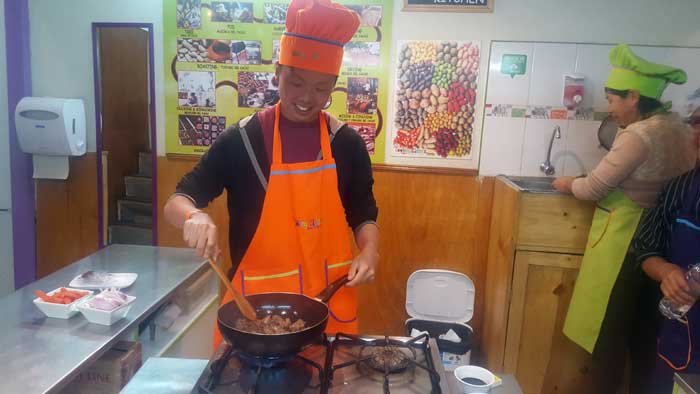
But still, it was fun. We learnt to make a national drink (Chicha Morda or Pisco Sour) and desserts too.
Classes are at 10:30 am and 3:30 pm, lasts 3.5 hours and are conducted in English. Check out Peruvian Cooking Classes at http://www.peruviancookingclasses.pe/
26. Satisfy Your Sweet Tooth by Learning to Make Chocolates
The same guys at Peruvian Cooking Classes have a chocolate craftory nextdoor called BONBONAO Chocolate Craftory.
They bring you through the whole chocolate making process starting from cocoa beans, to cocoa liquor, to chocolate bar pieces. You get to add different flavours, temper, shape it and decorate however you want.
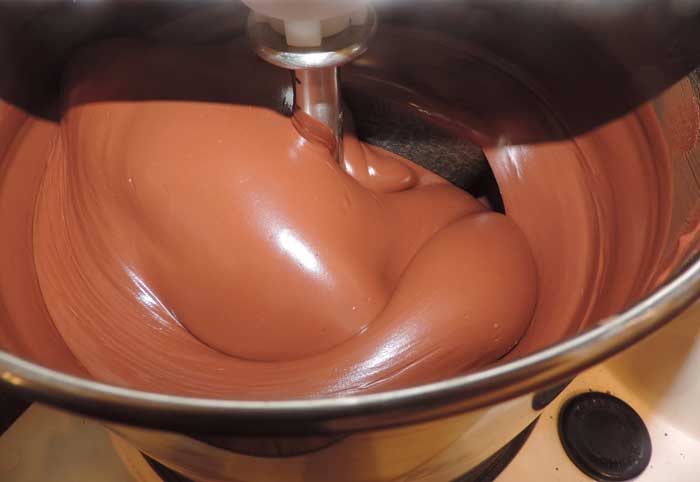
They offer two workshops each day at 11:30 am and 4:30 pm and it lasts 2 hours. Find out more here: http://www.peruviancookingclasses.pe/p/my-chocolate.html
27. Learn to Make Peru’s National Drink
Speaking about Pisco Sour, have you tried Peru’s national drink?
I wouldn’t say you must try it, but you must try it. It is EVERYWHERE in Peru. There is a longstanding debate on who invented Pisco Sour: Peru or Chile. Whoever it is, why not learn to make your own?
There are numerous places to learn. I learnt it in my cooking class, in a bar, on a free walking tour and even at some hostels.
The Museum of Pisco in Cusco is a great starting point. Don’t be fooled by the name – it is a bar. Check them out here: https://museodelpisco.org/
Taste the World-Renowned Cuisine of Peru
Speaking about food and drinks unique to Peru, here are some you must try:
28. Ceviche
Ceviche is like the chicken rice in Singapore: the unofficial national food, and I daresay you haven’t been to Peru if you haven’t had Ceviche.
Ceviche is fresh raw fish “cooked” with citrus juices such as lime/lemon and spiced with aji/chilli peppers. A little sour, a little spicy, very much fresh. Yum.
29. Cuy
Cuy, or guinea pig, is a traditional food of the Inca people and a popular dish in Peru. It is high in protein and low in fat and has an interesting taste similar to chicken. But I dislike it.
Because of its novelty, cuy is a rather expensive dish (especially in tourists-filled Cusco centre). A place where locals go to is Barrio Santiago – a drive out of the city centre. There are numerous stalls in that area.
I went with a couple of teachers and students at my Spanish school and there were no other foreigners. If not for them, Barrio Santiago is not a place I’d have gone alone.
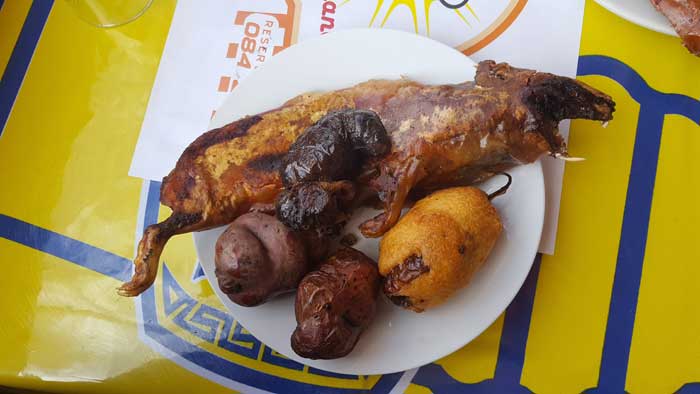
30. Anticucho
Walk along the streets of Cusco and you might see vendors pushing a cart with a grill. The meat on these sticks akin to satay or kebab are actually… cow’s heart – anticucho.
Anticucho really tastes and feels just like beef. It usually comes with a huge piece of potato on top.
31. Alpaca
Alpacas and llamas are camelids usually found in the highlands of the Andes. Naturally, the people in the mountains tame them, domesticate them and also eat them – just like they would with other animals.
Alpacas are more common in restaurants and they are leaner than beef. Llamas are rarer.
Check out Uchu Steakhouse for its alpaca steak. It's just a 5min walk from Plaza de Armas and is a popular place with locals, expats and visitors.
Address: 135 Calle Palacio, Cusco
32. Chifa
All round Peru you’ll see restaurants with the words ‘Chifa’ on it. These are Chinese restaurants that serve pretty much the same food everywhere.
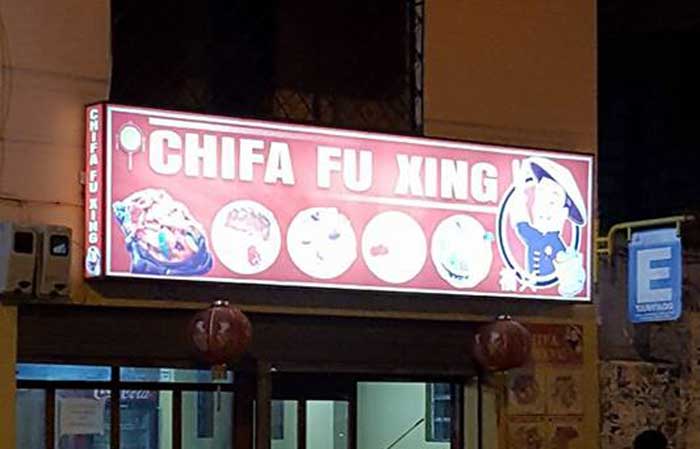
Food in chifas are a fusion between Peruvian and Chinese influences and some common ones are Lomo Saltado, Wanton soup, Chinese noodles etc.
Don’t be surprised if you enter a Chifa and don’t see any Chinese.
Fun fact: Chifa probably derives from “chi fan” which means “to eat” or literally “eat rice” in Mandarin.
33. Chirimoya
Chirimoya is a fruit found in Peru, Ecuador, Bolivia and Colombia, although I’ve only seen it in Peru. It is sweet and its flesh has a creamy texture which gives it a secondary name: custard apple.
I liked it a lot. Even Mark Twain called the Chirimoya “the most delicious fruit known to men”.
34. Chicha Morada
A local drink made from purple corn and is very popular everywhere is Cusco and the south. It is made by boiling purple corn, pineapple, cinnamon, clove and sugar, and is non-alcoholic. The cooking class that I attended offered to teach this but we chose the Pisco Sour instead.
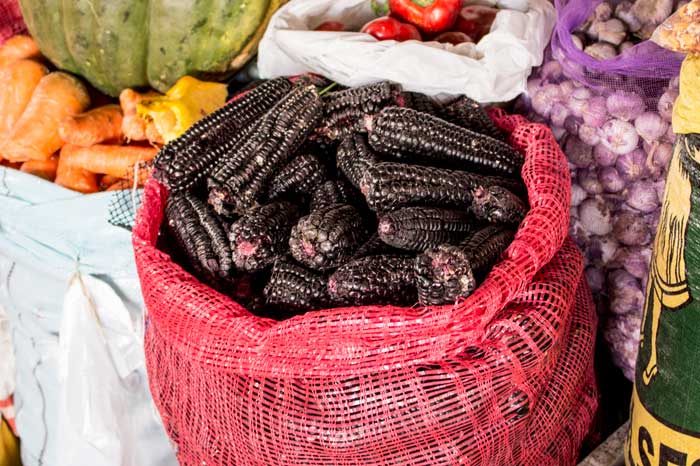
Why go through so much hassle when you can get this for a sole in the market?
It tastes a little like a less sweet Ribena… if I have to describe it in words.
35. Chicha Morada Ice Cream
While we’re at it, have a go at the Chicha Morada ice cream. Since Chicha Morada is unique to Peru, the same-flavoured ice cream couldn’t be found anywhere too.
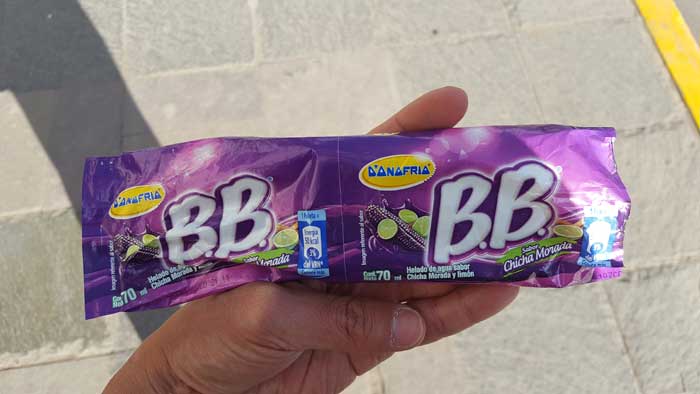
36. Inka Cola
Last but not least, the drink that is the national pride of Peru: Inka Cola.
A super sweet yellow bubblegummy soda that comes in all sizes and sold everywhere in Peru, Inka Cola is one of the few privileged drinks in the world that outsells Coca Cola at home. Ironically, Coca Cola bought over Inka Cola.
It has a very strong dividing taste and whether you like it or not, you have to try it at least once!
Admire the Grand Architecture of Cusco Churches
37. Worship at the Main Cathedral of Cusco
The Cathedral Basilica of the Assumption of the Virgin, or Cusco Cathedral, is the mother church in Cusco. It is located on the Plaza de Armas and took almost a hundred years to complete building.
The Cusco Cathedral was built on the remains of the Inca temple Kiswarkancha - the palace of the most important Inca deity – which the Spanish tore down to build their Christian church. Classy.
The minor basilica was also declared a UNESCO World Heritage Site under the City of Cusco, and contains crypts, artefacts and paintings.
Tip: Look out for the Last Supper painting, where Jesus and his disciples surround a plate of Viscacha, a wild Andrean chinchilla (and not a guinea pig as many thought).

Photo: Victor Belloti
The normal price to enter the cathedral is PEN $25 (USD $8) during the normal opening hours from 10am – 6pm. But if you go in the morning during mass hours, it is free.
Cusco Cathedral Mass Times: 7am – 9am
38. The Church of Triumph
Tucked right next to the Cusco Cathedral is the Church of Triumph.
Overshadowed by the bigger and more popular main cathedral, the Church of Triumph is actually the first Christian church to be built in Cusco in 1536 – just three years after the conquistadors arrived. The name signifies the victory the Spaniards had over the Incas.
39. The Company of Jesus Church
The final church to round out the trinity of churches on the Plaza de Armas is the Company of Jesus Church.
This church was notorious for ‘rivalling’ the main cathedral in terms of its Baroque façade and how decadent it could be built. Looking at it now, it turned out pretty well.
You’ll also find Peru’s biggest altar here and if you head up to the second floor, be rewarded with a splendid view of the main square.
40. Qorikancha, Church and Convent of Santo Domingo
The Qoorikancha was perhaps the most sacred and important building in the Inca empire – the Temple of the Sun. Like many ancient cultures, the Sun signifies the most powerful being in the Universe, and a temple dedicated to the Sun (Inti) is naturally the most sacred.
The walls of Qoorikancha was covered in sheets of gold, the courtyards filled with golden statues, and plates of fine gold oracles and edifices enriched the building.
When the conquistadors arrived, they plundered all the gold and destroyed the temple. With the Order of Santo Domingo, they built the church and convent over the remains of the most important building in the Inca empire.
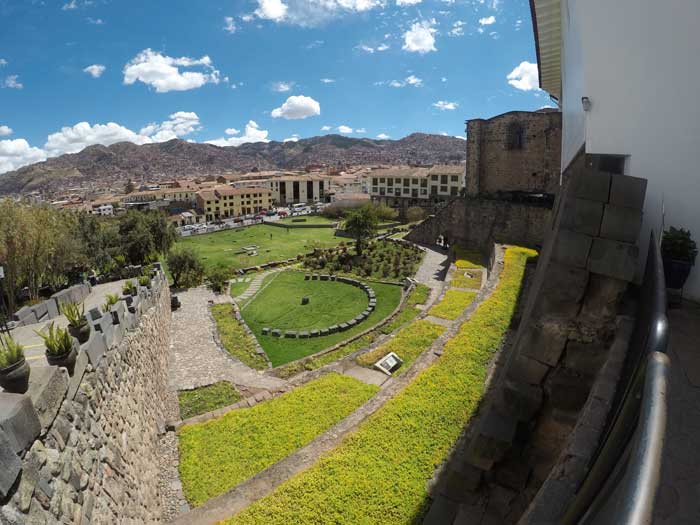
From the outside, you can see the architecture from 3 distinct periods: pre-Inca, Inca and Colonial.
The entrance fee to Qorikancha is PEN $10 (Aug 2017). Guides can be hired for a more detailed explanation of the history. If there is only one place to visit in Cusco, this will be it.
41. Visit the Other Churches in Cusco
Besides the abovementioned four churches, there are a ton other churches in Cusco that may be of interest for the church hunters:
- Temple of San Blas
- Church and Convent of Our Lady of Mercy
- Convent of Santa Catalina
- Church of San Cristobal
- Church of San Pedro
- Archbishop's Palace
Take some time to appreciate the fine details of these magnificent buildings or enter and find peace with yourself. I always do.
Relive History in the Numerous Cusco Museums
42. Learn About Machu Picchu at Casa Concha
Casa Concha, also known as Mueso Machu Picchu, is the place to learn more about Machu Picchu and the people that lived there. It is also home to some 4000 artefacts excavated from the sacred site by the founder Hiram Bingham and his team.
Address: 320 Santa Catalina Ancha
43. Learn About the Inca History at Inka Museum
The Museo Inka is set in a huge colonial mansion and is the place to go to learn more about the different periods of Inca and Spanish history in Peru. With 24 exhibition rooms and unfriendly layout, you can easily spend a whole afternoon here.
Did you know that the ancient people are not called Incas? That title was only reserved for the King of the empire but through time and misuse, the people is now collectively known to us as the Incas.
Address: Calle Ataud (Just off Plaza de Armas)
44. Learn About Quechua Culture at the Quechua Museum
Quechua – the language that many Peruvians, Bolivians and Ecuadorians still speak. This little museum helps to give a glimpse into the Quechua culture; with replica artefacts, ceramics, photos and paintings.
I walked past this museum one day and realized it has a free entry. I went in, took a look, and loved the bright colours on display. It also has a gift shop with books and clothes.
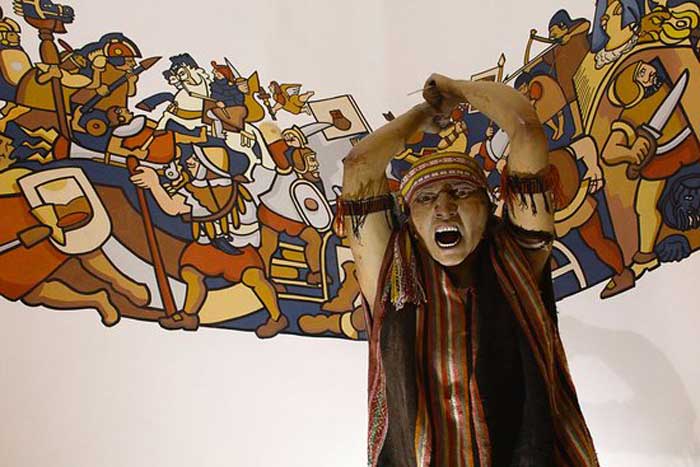
Address: Calle Zetas 109, beside Qorikancha
45. Learn About the Region at the Cusco Regional History Muesum
Less about the Inca and more about the region and country as a whole, the Museo Histórico Regional de Cusco houses a collection from the Preceramic Period to the Wari, Pukara and Inca cultures. Items such as jewellery, ceramics, weapons, religious art and even gastronomy can be found here.
Also known as Casa Garcilaso, the house of Inca Spanish-Chronicler Garcilaso de la Vega.
Address: Calle Heladeros with the corner of Plaza Regocijo
Included in the Cusco Tourist Ticket*
46. See History Come Alive at the Pre-Colombino Art Museum
The MAP Museum, as it is known locally, is dedicated to artefacts found in Peru prior to the arrival on the Europeans in the 15th century. You can find wooden totem poles and ceremonial staffs and also a fancy art gallery in this colonial-style building. It is well-kept and well-presented.
Address: Plaza de las Nazarenas 231
47. Appreciate Art at the Various Art Museums
Originally the palace of Inca Roca, the Religious Art Museum is now a mansion exhibiting religious art collections with accurate period details and insight into the interactions between the conquistadors and the conquered.
Other art museums are the Museum of Contemporary Art, Popular Art Museum of Cusco, Hilario Mendivil Museum and the Familia Gutierrez Graphical Art of Peru (worth a visit).
48. Visit the Museum in the City Town Hall
The Museum of Contemporary Art is also known as the Municipal Palace Museum, located in the City of Cusco Town Hall. It showcases the works of national, Latin American and international artists. Not much information about the art work is displayed in the museum, and is honestly a forgettable museum. The only cool thing is it being in the Town Hall and free if you already have the Tourist Ticket.
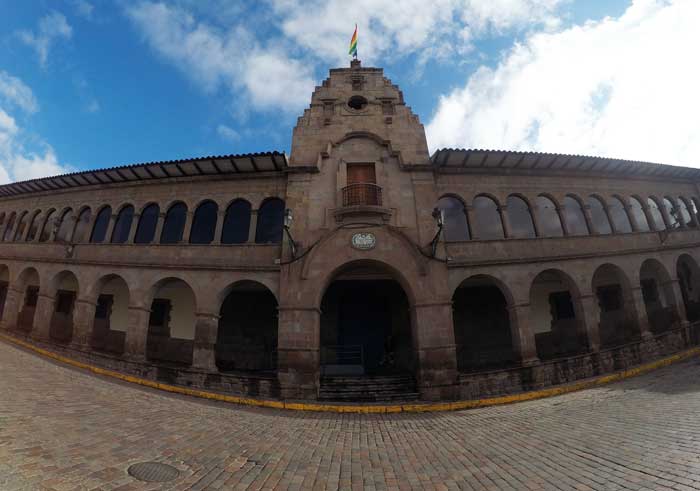
Address: Plaza Regocijo
Included in the Cusco Tourist Ticket*
49. See the Weavers of the Region
The Centro de Textiles Tradicionales del Cusco is technically a shop that exhibits the art of weaving, instead of an actual museum. It is a non-profit organization that works with native village communities to help rescue traditions and promote the weavers and their works. 70% of the sales of any garments and textiles go directly to the weavers.

Photo: Victor Belloti
Address: Avenida El Sol 603
50. Visit the Museum of Peru’s Living Human Treasure
Maximo Laura is Peru’s most renewed tapestry weaver and has won numerous accolades and awards. His building – the Museo Maximo Laura – houses his most important and richest works and is the first museum dedicated to contemporary Peruvian tapestry.
He has also been designated as “Peru’s Living Human Treasure” and any fan of tapestry must not miss this museum. See more at https://www.museomaximolaura.com/
Address: Santa Catalina Ancha 304, Cusco
51. Visit a Catacomb in a Museum
Officially called ‘Museo y Catacumbas Del Convento San Francisco de Asis Del Cusco’, the church-turned-museum is an unassuming but surprisingly fascinating museum with ornate decorations and artwork depicting the life of Saint Francisco. It also houses the third largest painting in the world.
Included in the entrance fee of PEN $15 is an informative and highly raved-about guided tour of the complex. The highlight is the visit to the catacombs and a bell tower with great views.
Address: Plaza San Fransico
52. Indulge in Chocolate at the Choco Museum
Similar to the chocolate-making class, the Choco Museum is Cusco teaches you about the history of cacao and chocolate, the whole process from harvest to production and prides itself on having an artisanal chocolate factory. You get to touch, smell and feel real cacao beans and join a workshop to make your own chocolate.
Like most novel museums, there is a gift shop.
Address: Calle Garcilaso 210
53. Get High on Coca Leaves at the Coca Museum
Coca leaves are used in many high-altitude places to combat altitude sickness. If you travel throughout South America and especially in the highlands, this museum might be useful to you. It traces the uses of coca leaves from sacred rituals to cocaine abuse to the benefits in modern day use.
There is also a gift shop. Entrance: PEN $20 (Aug 2017)
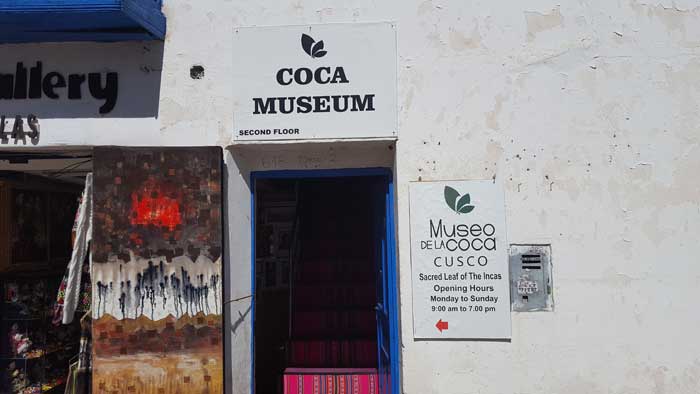
Address: Plazoleta San Blas 618
54. (Don’t) Be a Couch Potato at the Papa Museum
It is foremost a restaurant but also explains about the history of potatoes and how they are grown and harvested. Peru has over 3000 varieties of potatoes so I wouldn’t be surprised if there is a museum about it.
Also, check out the amusing potato carvings and laugh at the fun facts (about potatoes, no less). When you’re done, dine at the restaurant and taste the different - what else - potato dishes.
Address: Calle Cascaparo 116
55. Stargaze at the Planetarium
The Incas were expert in navigating the world under the guidance of the stars and constellations. You can now learn (a fraction of) how they did it at the Cusco Planetarium. Book a tour and learn about Incan astronomy, understand their actions from another perspective, wonder at solar system and constellation projections, or if all sounds too complex for you, simply stargaze with a giant telescope.
Read more about and book your astronomy tour here: http://www.planetariumcusco.com/en/the-planetarium/the-planetarium.html
56. Get Into the Mind of the Greatest Inca Ruler
The Pachacutec Monument is probably the most well-done museum I visited in Cusco – in terms of professionalism. It is a tower museum dedicated to undoubtedly the greatest Incan ruler: Pachacutec.
Inca Pachacutec is believed to have been the greatest visionary, planner, strategist, reformer and organizer of his time and without him, Peru might’ve been very different.
The museum has 7 floors and each talk about a different phase of the emperor’s life. The final exhibition is called “Pachacutec Lives Among Us” and shows a lineage of Pachacutec, and how the Inca history remains current today.
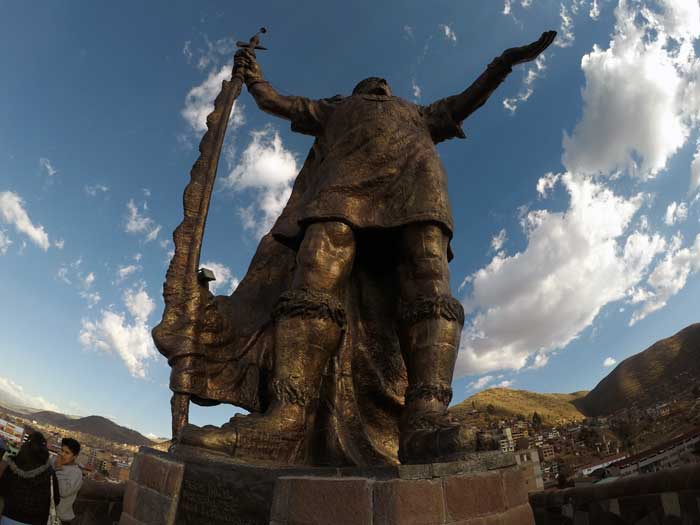
At the roof top is a majestic statue of the great leader in a powerful stance, overlooking the city he once ruled over. This is my favourite museum of them all.
Address: At the End of Avenida del Sol, 15-20 min walk from Plaza de Armas
Included in the Cusco Tourist Ticket*
Things to do Around Cusco
57. Visit the Statue of Christ
Cristo Blanco is the white statue of Jesus Christ above the hill surrounding the city.
At 8m tall and not as well-known as the Christ statue in Rio de Janeiro, it is nevertheless a popular place with families on the weekend. On a Sunday that I was there, groups where having picnics while fathers and sons filled the sky with colourful kites of all shapes and sizes.
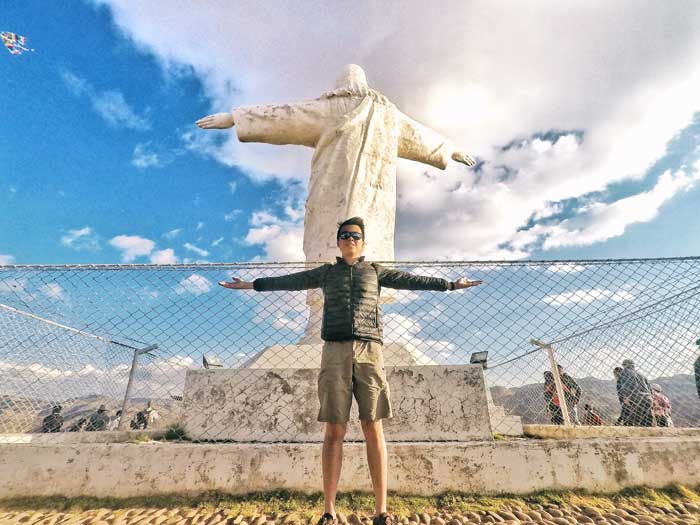
At night from up there, you are presented with a spectacular view of Cusco lit up at night.
You can take a 15min taxi ride up, the abovementioned Cusco sightseeing bus or simply walk up there in 40min.
Visit the Ruins Surrounding Cusco
Even though most people come to Cusco for Machu Picchu, if you are a history lover like me, there are some minor ruins on the outskirts of Cusco that are worth the visit.
The following 4 are the main ruins on the outskirts of Cusco and are commonly included in an organized tour and are part of the Tourist Ticket circuit.
To get to these ruins on your own, either take a taxi or a bus going towards Pisac and get off at Tambomachay and walk back towards Cusco. The walk is 8km and makes for a great half-day trip.
You can also do it the other way and walk up to the ruins. Simply flag down a return bus once you’re done.
58. Sacsayhuaman
The most impressive of the ‘minor ruins’ surrounding Cusco is Sacsayhuaman – a major citadel that was first built by the Killke culture and later expanded by the Incas.
Like many Inca structures, the massive stone blocks used to build Sacsayhuaman – weighing up to 300 tonnes – were fitted together with absolute perfection, without using mortar. It is said even a single sheet of paper will not fit between the stones.
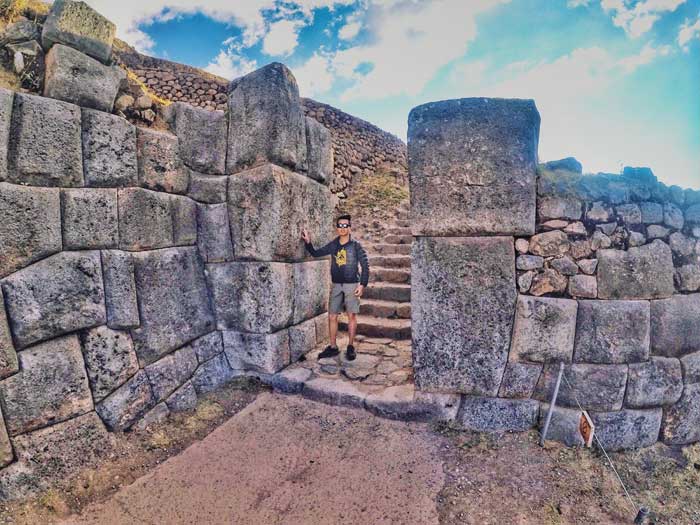
Depending on who you believe, Sacsayhuaman acted as a temple, a fortress and even a small city. Whatever it is, this complex archaeological site is worth a visit.
Fun fact: It is cheekily known as “Sexy Women” by foreginers.
Included in the Cusco Tourist Ticket*
59. Q'enko
Slightly further from Cusco than Sacsayhuaman lies the ruins of Q’enko.
Quechua for ‘zigzag’, the temple was named from the crooked canal cut out of the limestone rocks used to build the complex.
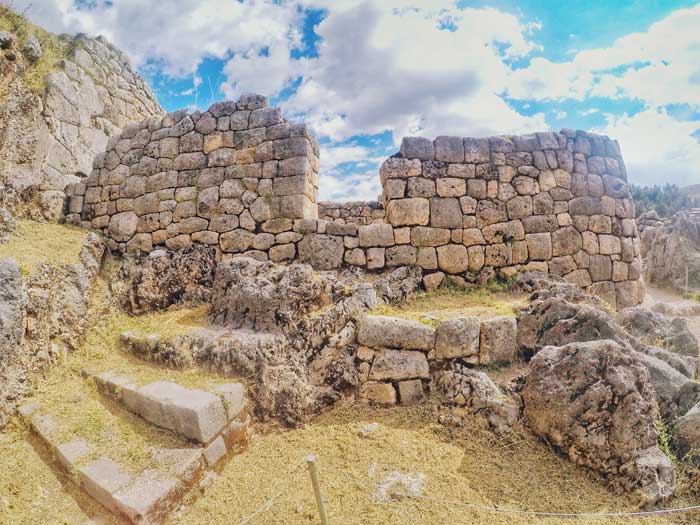
No one knows for sure what liquid the canal carried. Holy water, alcohol and blood were some of the wild guesses, leading to theories that Q’enko was a ceremonial and sacrificial place.
Included in the Cusco Tourist Ticket*
60. Puca Pucara
Puca Pucara is also known as the red fortress. The now-grey architecture was thought to be once red in colour due to the iron found in the limestone rocks used to build the complex.
It served more as a guard post controlling the flow of people and produce into the city, rather than an actual fortress.
Included in the Cusco Tourist Ticket*
61. Tambomachay
Tambomachay was a site used for ritual bathing, and is known as the Inca Baths. Canals, aqueducts and waterfalls can be seen throughout the site.
The excellent quality of the stonework suggests that only the nobility was allowed here – like a holiday spa resort.
Included in the Cusco Tourist Ticket*
As you walk along these 4 ruins, there are a couple of smaller ruins that are free to visit like the Temple of Monkey and Temple of Moon (Templo del Mono/Luna).
Located further away from Cusco are a couple of lesser known ruins that are slowing experiencing an increase in tourist visits. They might be worth a visit to the tomb raiders ruin seekers.
62. Raqch'I (Temple of Wiracocha)
At 110km from Cusco is Raqch’I, an Inca archaeological site that was also a heavily-populated area. The complex of Raqch’I was made up of housing, temples, palaces, astronomical observations, food storehouses etc.
The most outstanding structure in Raqch’I is the Temple of Wiracocha – the Incan God of Creation. The temple is an enormous rectangular two-story roofed structure that is 20m high and worth a photo-opp, if not for the history.
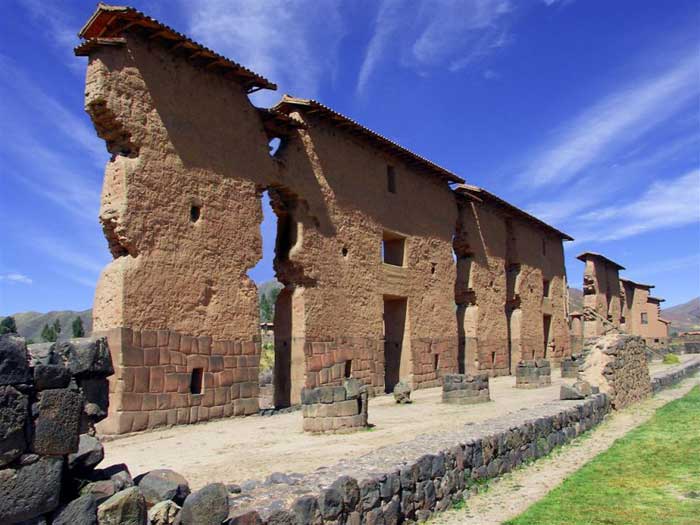
Getting there is not easy as it is not a common attraction offered by tour operators. One option is to take a bus going towards Puno and get off near the site of Raqch’i. Another is to hire a taxi, which is gonna cost a bomb.
63. Huchuy Qosqo
Huchuy Qosqo is also known as ‘Little Cusco’, so-called for its royal estate modelled on the Inca Capital of Cusco.
Because of its location and how organized it was as a royal estate, it is getting more popular with locals and tourists alike. Many tour operators offer a 1-day trek to Huchuy Qosqo, bringing you through beautiful valleys and mountain villages.
It is even offered as a multi-day trek to Machu Picchu.
Soak in the Beauty and History at the Sacred Valley
The Sacred Valley is range of valleys and rivers and towns near Cusco. It is one of the most popular day-trip option other than Machu Picchu itself.
Here is a quick breakdown of the Sacred (and Southern) Valley. I have written a whole guide about the Sacred Valley here.
64. Pisac
Pisac is known for its famous Sunday market which has all sorts of colourful knitted alpaca wool clothing, exquisitely-designed leather notebooks, touristy shot glasses, magnets and much more.
It is also known for the pre-Colombian agricultural terraces and hilltop Inca fortress towering over the village. The terraces were perfectly carved and the view from the fortress is out of this world.
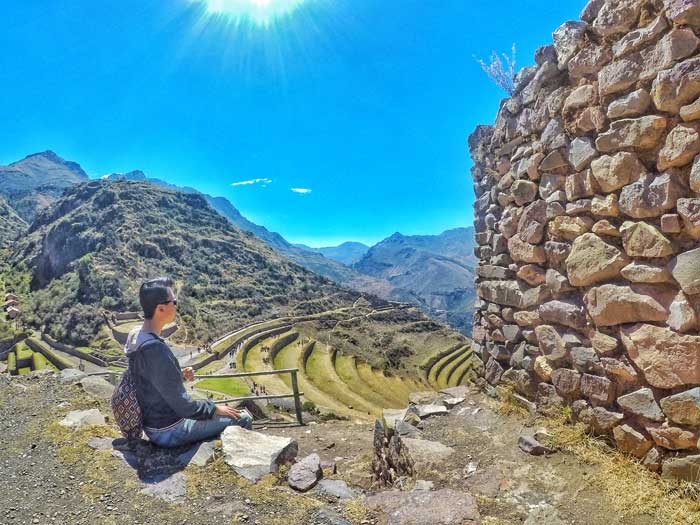
Included in the Cusco Tourist Ticket*
65. Urubamba
Urubamba is the largest town in the Sacred Valley and lies along the road from Cusco to Machu Picchu, beside the Urubamba River, its namesake. This city is considered more of a commercial hub than a tourist attraction.
It is nevertheless a good option for long-term staying in the Sacred Valley (expats/volunteers).
66. Ollantaytambo
Ollantaytambo is a touristic village and home to an Inca archaeological site, built on a huge stone crop terrace that wrapped and flowed around impossibly steep hillsides.
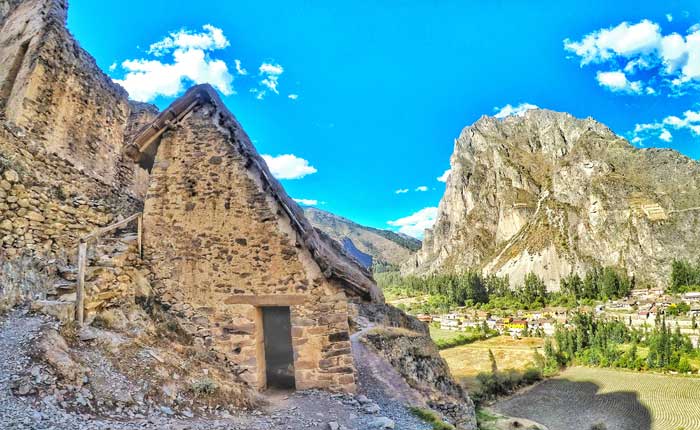
It is the place when the Incas won a battle against the Spaniards, and also where you board the train to Machu Picchu.
Included in the Cusco Tourist Ticket*
67. Moray
The Moray terraces are the highlight of the area. It is believed that these amphitheatre-like terraces were an agricultural lab where the Incas performed experiments that resulted in the more than 3000 varieties of potatoes in Peru today.
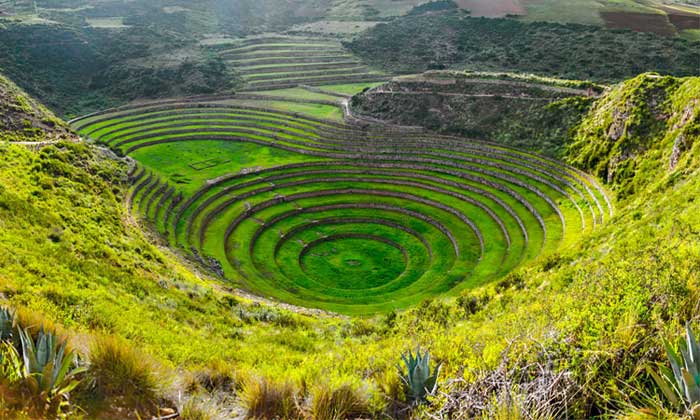
Included in the Cusco Tourist Ticket*
68. Maras
Maras is known for its salt mines – a network of thousands of cascading pools of ancient salt deposits, that together form a ridiculously photogenic phenomenon.
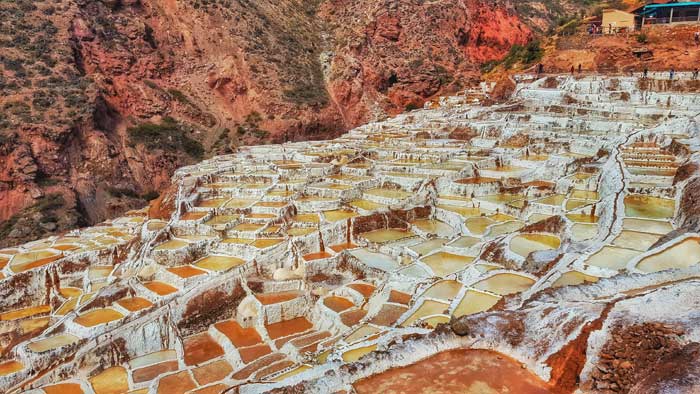
Personally, this is the highlight of my visit to the Sacred Valley.
69. Chinchero
The picturesque village of Chinchero is known as the ‘birthplace of the rainbow’.
The rainbow is a very apt description of the village for its colourful Sunday market and weaving demonstrations. Indigenous ladies show visitors how different coloured dye can be obtained from natural sources.
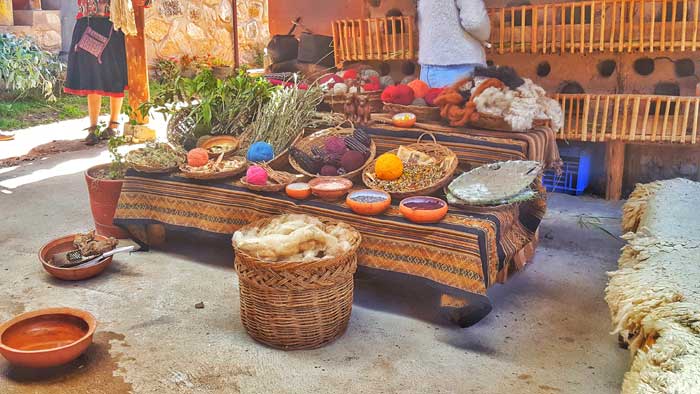
There are also ruins in Chinchero that were once a summer getaway country-resort of the Inca Tupac Yupanqui.
Included in the Cusco Tourist Ticket*
70. Tipon
In the Southern Valley of Cusco are more ancient ruins and villages, the most popular being Tipon. It is a place where the Inca worshipped the element of Water. There are aqueducts, water channels, fountains and an overall impressive hydraulic engineering system.
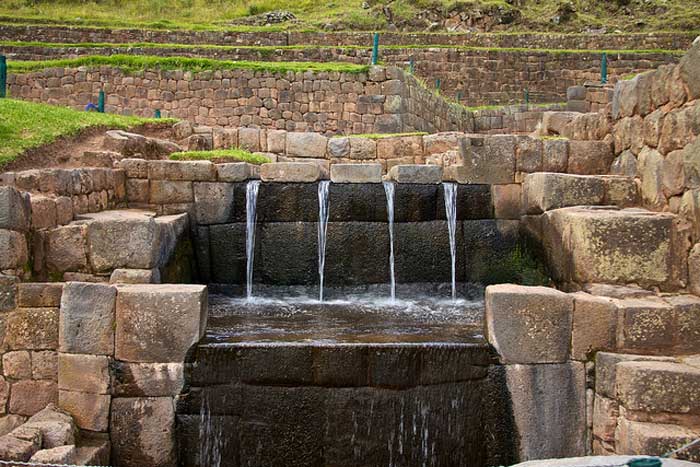
Included in the Cusco Tourist Ticket*
71. Pikillaqta
The only pre-Inca ruins in the region, Pikillaqta is humorously known as ‘city of the fleas’. Literally, the word Pikillaqta means ‘lousy town’ in Quechua, the language of the Incas.
The town was built by the Wari people between AD 700 – 900 and the obvious differences can be seen from the construction materials.
Included in the Cusco Tourist Ticket*
72. Andahuaylillas
The main attraction in this colonial town is the catholic church, known as the ‘Sistine Chapel of the Americas’ for the impressive paintings, decorations, and other treasures of art and gold.
Unlike the other locations, the church has an entrance fee of PEN $10.
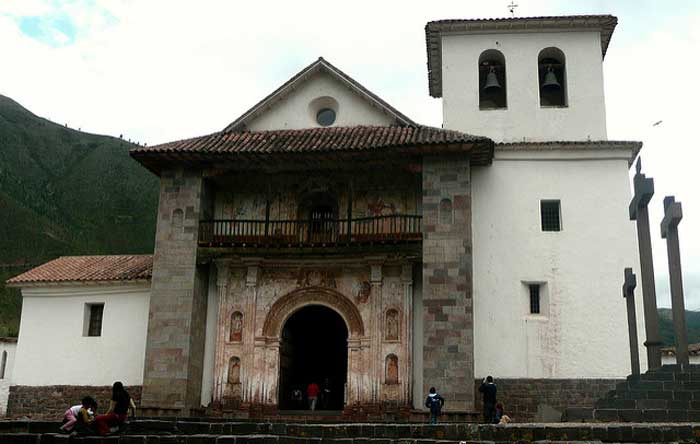
Image Credit: Eduardo Zárate
Again, that was just a brief introduction to the Sacred Valley. To read more about it and how to get there, check out my detailed guide here.
73. Bonus: Sleep Like a Condor in the Skylodge
If you have too much money to spend and want a unique experience, book a night at the Skylodge in the Sacred Valley.
This capsule suite is a transparent hanging bedroom BY THE MOUNTAIN that lets you appreciate the spectacular views of the Sacred Valley.
To reach your bedroom, you have to climb or hike up the mountain. But don’t worry, a gourmet dinner is waiting for you at the end of your climb. Complete with wine.
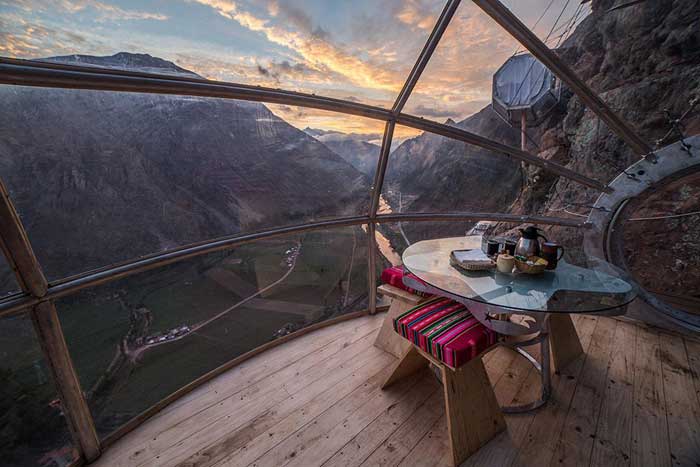
Photo: naturavive.com
The cheapest package is just PEN $1335 or USD $412 per night.
Check it out here: https://naturavive.com/web/skylodge-adventure-suites/
Or book it on Airbnb: https://www.airbnb.com/rooms/2177913
Day Trips Around Cusco
74. Conquer Your Fears at the Highest Bungee Jump in Latin America
Have you always wanted to do a bungee jump? (I have)
Where else to do it than at the highest bungee jump in Latin America – at 120m?
Action Valley Cusco has 20 years of experience and a solid track record of 100 000 jumps. The adventure park is only 15min from Cusco but that doesn’t matter since transport is included.
I struck off this item on my bucket list the first weekend I was in Cusco.
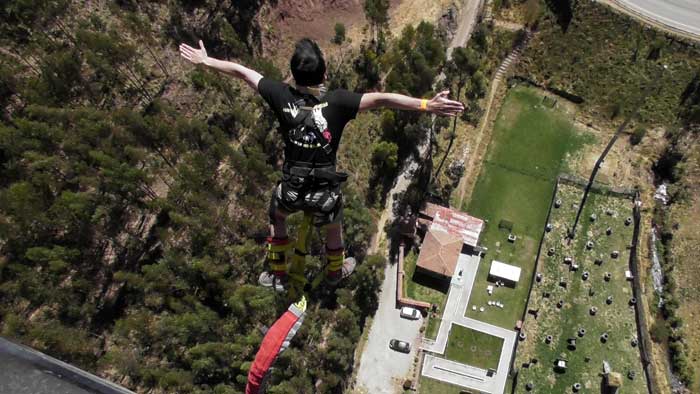
Quality service, highest standard equipment and emphasis on safety, Action Valley is the place to go for a jump.
Office Address: Santa Teresa 325
75. Blast Off Like Superman on the Slingshot
I lived off my Superman fantasy by blasting off to over 120m in 3s.
The Slingshot by Action Valley is an incredible and intense experience, where you get anchored and then released into the air - like a slingshot, or superman if you prefer.
When I was in Cusco, there was a package for bungee jump + slingshot at a special price. Check out their website for more information: https://actionvalley.com/en/home/
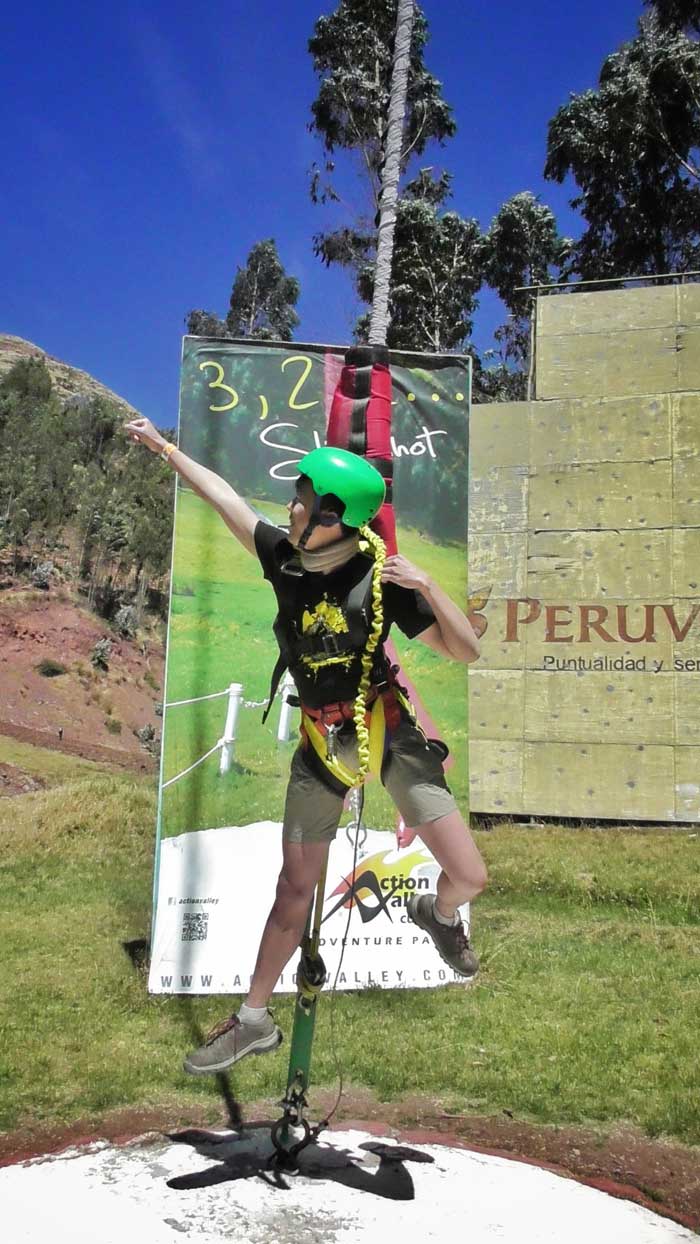
I had a blast of a time.
Office Address: Santa Teresa 325
76. Paraglide Like a Condor Above the Scared Valley
While we’re on the topic of flying, another option available in Cusco is paragliding.
Paragliding offers some of the longest flight time – from 15 to 30 min, the perfect activity to feel like a bird.
Fly above the some of the most beautiful views in the Sacred Valley, party with the condors and see the many ruins from high above.
Check out Green Peru Adventures paragliding package here: http://www.greenperuadventures.com/tour/paragliding-tandem-flights-over-the-sacred-valley/
77. Zipline Across the Cloud Forests Near Cusco
Close enough to flying but still ‘attached’ to the ground, ziplining is the perfect activity for those not ready to be entirely in the air yet.
Close to Cusco are many ziplining options: across sacred ruins, beautiful valleys or like a monkey in the forests.
I zoomed across valleys and forests near the town of Santa Teresa as part of my Salkantay Trek package.
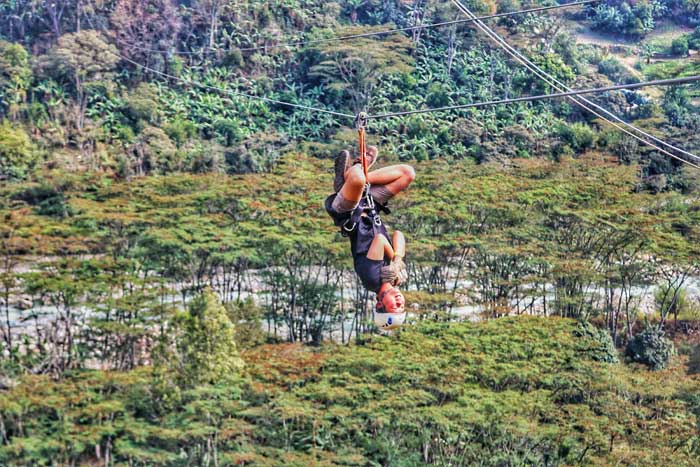
If you want a more daring adventure, check out the Night Zipline Adventure by Vertikal Zipline as you zoom into the darkness, accompanied by the full moon: http://vertikalzipline.com/tours/night-zip-line/
78. Get High Without Leaving the Ground
Still wanna be high in the mountains but not leaving the ground?
Via Ferrata allows you to climb up mountains up high in the Sacred Valley using a steel ladder, suspension bridges and cable systems - safe and perfect for beginner climbers.
You also have the option to pair it with ziplining or rappel down the mountains while enjoying the spectacular views of your surroundings.
Via Ferrata is usually a half-day adventure from Cusco.
Check out Via Ferrata with Eric Adventures here: http://www.ericadventures.com/machupicchu/cusco-peru-rock-climb/via-ferrata-rappel-sacred-valley.html
79. Get Wet with River Rafting Near Cusco
Cusco is located near the Urubamba River in the Sacred Valley, which is a couple of hours from Cusco and a popular option for river rafting.
The Urubamba river has Class 2, 3 and 4 rapids, and also introductory rapids and is therefore suitable for rafters of all levels.
River rafting in the Sacred Valley is a great way to “soak up” the overall experience in Peru.
Another option for challenging river rafting is slightly further and can take up to 3 days is the Apurimac River, southwest of Cusco.
80. Ride an ATV Quad Bike Around Cusco
Want to see the beauty of the Sacred Valley and surrounding Cusco with a touch of adventure and excitement?
Ride an ATV Quad Bike!
Roar through the dirt road to the ruins surrounding Cusco, to two breath-taking lakes or to the Salt Mines of Maras. No driving experience required!
81. Ride a Horse to the Ruins
Prefer a calmer ride?
Traverse the wide plains of the Incas like they would – with a horse instead of llamas.
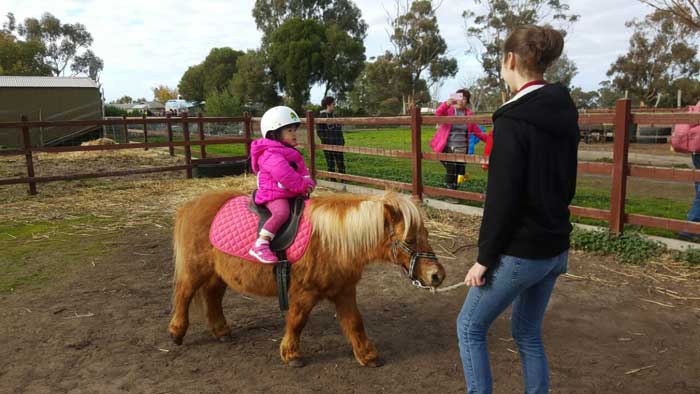
Horseback riding around Cusco is a perfect activity for families as it is suitable for adults and children. Ride around the ruins, to the salt mines or under the moon and stars. There’s even a multi-day horseback riding halfway to Machu Picchu!
82. Walk a Llama Through the Andes
Yes, you can take a llama out for a walk and live out your fantasy of being a llama-trainer!
The Llama Pack Project offers ‘llama treks’ where you bring llamas out to their grazing spot, or simply walk in the company of these mystical animals in the picturesque valleys.
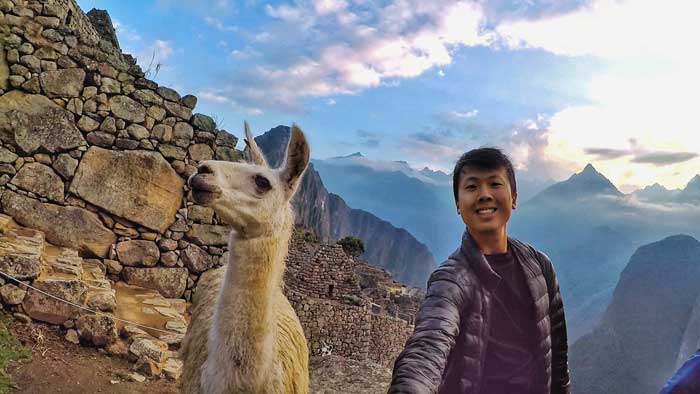
The project aims to raise environmental awareness, facilitate community inclusion and promote healthy breeding practices - as a tool for sustainable rural development and conservation of Andean mountain ecosystems in the Sacred Valley of the Incas highlands.
Read more about the project and join their program here: http://llamapackproject.com/
83. Soar with Condors at the Condor Canyon
Did you know that the condor is one of the three sacred animals of the Inca culture?
You can see condors in many paintings, sculptures, emblems, trinkets etc throughout the Andean highlands, along with the puma and snake – the two other scared animals.
But even better, you can see life condors flying majestically in the Apurimac Canyon – better known as the Condor Canyon - located in the Chonta community, some 3 hours away from Cusco.
See Tierras Vivas for a detailed itinerary: https://www.tierrasvivas.com/en/condor-canyon-cusco
84. Get Up Close with Rescued Animals at the Ccochahuasi Animal Sanctuary
The Ccochahuasi Animal Sanctuary is a private family-run organization dedicated to the rescue and care of animals that were mistreated or under the threat of poachers.
Get up close and cosy with llamas, vicunas, condors, tortoises, dogs, bears and even mountain lions.
Some agencies offer an overpriced tour there but you take a public transport there easily.
Located at 22km away from Cusco, take the bus that goes towards Pisac and ask the driver to drop you off at the sanctuary.
Learn more about the Sanctuary here: http://www.santuariocochahuasi.com/
85. Take the Train to Machu Picchu
The train to Machu Picchu is the only ‘public transport’ that brings you to Machu Picchu Town (or Aguas Calientes). The 2 companies that operate train services are PeruRail and IncaRail.
It is said that the ride to Aguas Calientes is a scenic ride and an experience in itself. There are multiple levels of luxury and the most pricey option - the Hiram Bingham Luxury Train – is one of the most famous train rides in South America.
Buy your tickets at: www.perurail.com or https://incarail.com

Sadly, I walked the train track to Machu Picchu.
86. Hike Up to 5200m at the Rainbow Mountain
The Rainbow Mountain is probably the most popular image that appeared on my Instagram newsfeed (besides Machu Picchu) during my time in Peru. And rightly so.
This mystical seven-coloured mountain was only discovered a decade ago and is rapidly becoming a hot destination. Just look at the picture!
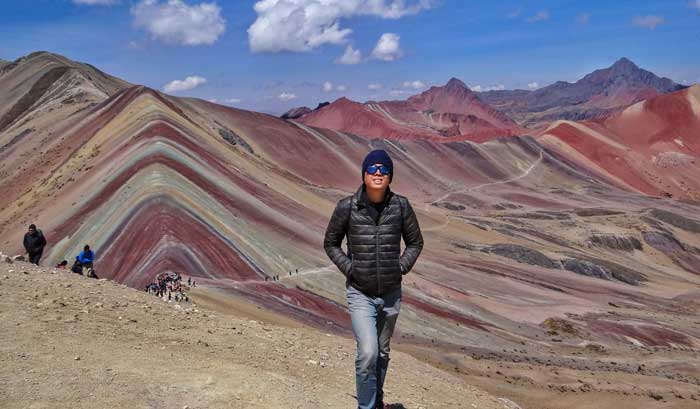
You can do a one or two-day hike or as part of the five days Ausangate Trek. It is not an easy hike due to the high altitude but there are horses for rent. Read about my experience here.
87. Marvel at the Beauty of the Humantay Lake
When I saw a photo of this lake on the internet, I knew I must go there.
It is – till now – still the most beautiful glacier lake I’ve seen. The lake at the feet of the majestic Humantay Mountain had crystal blue water, which sparkled when the clouds parted and revealed the sun.
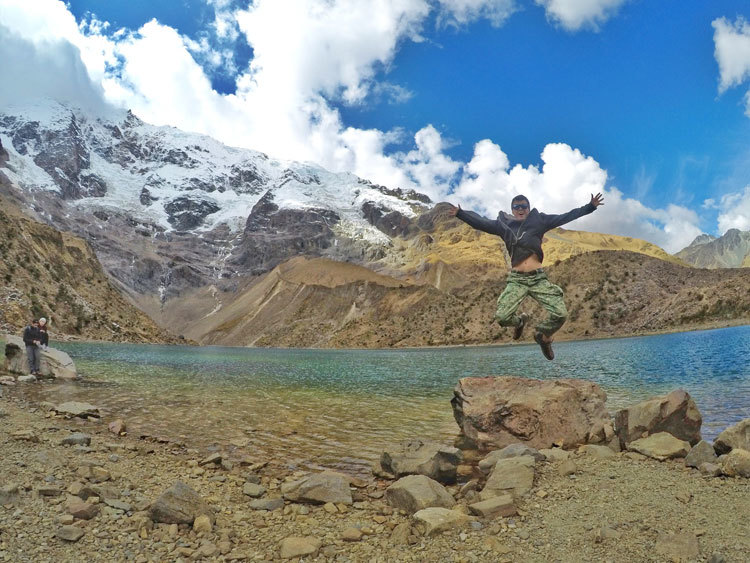
If you’re adventurous enough, you can climb up the narrow ridge about the lake for a view of the surroundings.
You can do a day-trip to the lake or as an optional part of the Salkantay Trek. Similarly, almost all tour agencies bring you there.
88. Have a Different Perspective from the Devil’s Balcony
The Devil’s Balcony (Balcón del Diablo) is closer to Cusco and a hike you can do independently. Tucked behind the ruins of Sacsayhuaman is a trail that leads to a large rock with a cave called the Chakan Cave, whereupon the lookout is found.
The site is a natural architectural heritage and the large rock looks like it was painted with large giant paint brushes of different colours. Sometimes, there is even a waterfall.
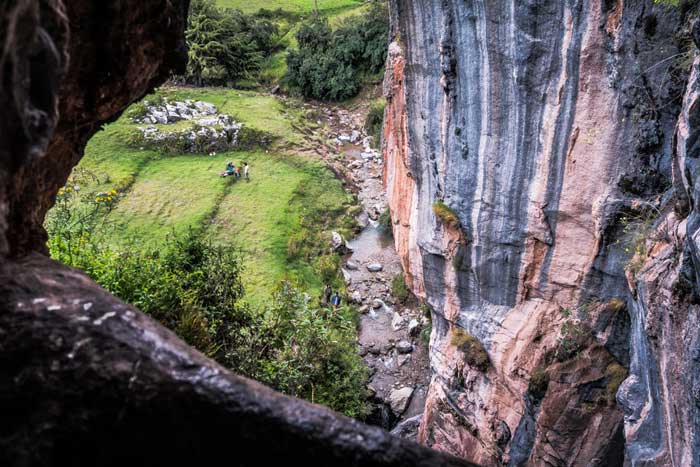
Photo: http://cuzcoeats.com
Who knew there would be this hidden little natural surprise?
89. Learn About the Different Pre-Hispanic Cultures in Peru
Located between Pisac and Urubamba in the Sacred Valley is a not much-talked about museum called the Inkariy Museum.
The Inkariy Museum is a private-run museum that showcases the history of the 8 different cultures that shaped Peru: Caral, Chavín, Paracas, Moche, Nasca, Wari, Lambayeque/Chimu and Inca.
Each culture is exhibited in two parts: elements/artefacts, followed by a re-enactment of a scene from each culture that is captivating for both adults and children.
Learn more about the museum here: http://www.museoinkariy.com/en/
90. Hang Out with Shamans and Learn from Medicinal Plants
The ‘Sacred’ part of the Sacred Valley makes it a location for tour companies to market the use of spiritual plants like Ayahuasca – usually found and administered in the Amazon forests.
Some call these plants drugs, some call them teachers. Whatever you label them, science has proven the benefits of such plant medicines that firstly purges your entire body and mind, and then teaches you what you need to – at a heavy price.

People travel from across the world to seek guidance and answers from such plants. But beware of the booming Ayahuasca tourism that comes with it fake shamans and unprofessional companies. Do your research well.
91. Pamper Yourself at the Hot Springs of Lares
The nearby town of Lares is known for its natural hot spring. It is open 24 hours and you can relax under the blanket of stars. The 6 pools vary in temperatures and is known to locals for their medicinal values.
There is a basic accommodation right next to the hot springs which is perfect for a late-night dip. The entrance fee to the hot spring is PEN $10 and a private double-room costs PEN $50 (Sept 2017).
There is a bus terminal along Av. Tullumayo with direct buses to Lares that departs on weekends at 6am and returns in the afternoon. If you prefer to go later to enjoy the hot springs at night, you first have to take a bus to Calca (PEN $3.50) and from there, a colectivo to Lares (PEN $8).
It is a perfect treat after exerting yourself on the various multi-day treks below.
Multi-Day Trips Around Cusco
92. Classic Inca Trek
The 4D/3N Inca trail to Machu Picchu is the most popular trek on the continent and sells out 6 months in advance. It is also extremely touristic, pricey and is limited to 500 trekkers a day (including guides and porters).
However, it is supposedly the ‘original way’ the Incas took to arrive at Machu Picchu, and brings you to various Inca ruins along the way. The highlight would be arriving at the Sun Gate at Machu Picchu during sunrise.
93. Short Inca Trek
Like the name suggests, this 2D/1N trek is a shorten version of the original Inca trail. It gives you a taste of the classic trek, is less demanding physically and you also get to enter Machu Picchu by the Sun Gate.
Sounds like the perfect option for those short on time.
94. Inca Jungle Trek
The 4D/3N Inca Jungle Trek is the budget and adrenaline-filled trek to Machu Picchu, making it ideal for backpackers and the younger generation.
Instead of merely walking, you get to bike downhill, zipline across valleys, raft in rivers and trek in jungles. Although sounds physically tiring, it is not as demanding as the other treks.
95. Salkantay Trek
The 5D/4N Salkantay trek is the most popular alternative to the classic Inca trek and the one I did. Salkantay is the name of a sacred mountain in the Andes and the name of the pass at the highest point of the trek.
This trek was named ‘Top 25 Treks in the World’ by Nat Geo and rightly so for its diverse natural beauty – from the cold snow-capped mountains to the humid cloud forests and ends in the majestic ancient ruins.
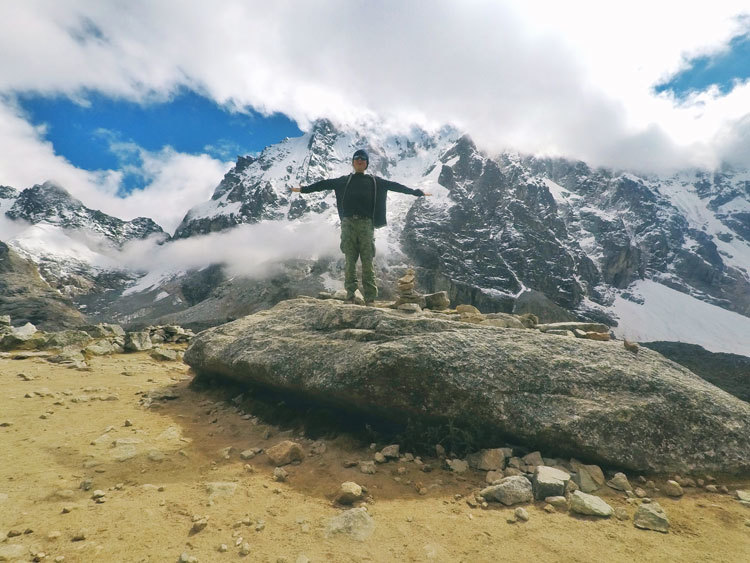
You can do this trek independently or join a tour. Prices vary from USD $150 to $600 and more. I of course went with the lower end of the spectrum but was not disappointed. 17 people from different countries hiked, slept, partied and cheered together, making it one of the most fun moments of my trip. Read more about my Salkantay experience here.
96. Lares Trek
The 4D/3N Lares trek is a less popular alternative – but that doesn’t make it any worse. It is a totally different trek that brings you to indigenous communities to meet and interact with the local people, and later to Machu Picchu. It is ideal for those who want to immerse themselves in the local culture.
97. Choquequirao Trek
The Choquequirao trek is a 4D/3N that brings you to the archaeological ruins of Choquequirao – the Lost City of the Incas.
Like Machu Picchu, Choquequirao was never discovered by the conquistadors and remains relatively untouched. Unlike Machu Picchu, Choquequirao receives around 30 visitors per day (compared to 3000).
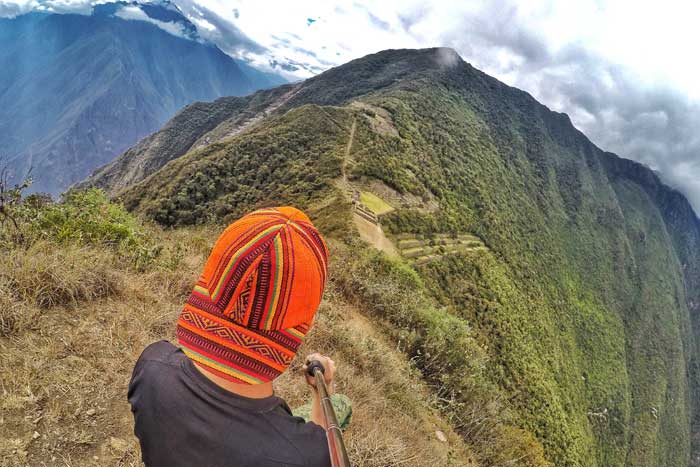
That’s because the only way to Choquequirao is to trek 2 days down and across a canyon and up the other side, and another 2 to return. There is no direct road access.
It is also one of the toughest treks in the Cusco region. There are plans to build a cable-car system that would bring the masses to the ruins. Get there before others do.
It can also be combined with Machu Picchu for the ultimate 9-day trekking experience. Read about my Choquequirao trek here.
I did the Choquequirao trek with Machu Picchu Reservations. Check out their Facebook page here: https://www.facebook.com/machupicchureservations/
98. Vilcabamba Trek
Even more isolated than the Choquequirao trek is the 5D/4N trek to Vilcabamba, commonly referred to as the ‘Last Refuge of the Incas’. It is believed that it was here the Incas were able to elude the Spaniards for more than 30 years.
The trek to the Espíritu Pampa ruins (‘the plain of ghosts’) is said to be extremely challenging, going from the high Andean mountain ranges to the dense Amazon jungle, passing by many ruins along the way. It is by far the most remote trail.
99. Ausangate Trek
This 5D/4N trek is not to Machu Picchu, but around the beautiful Andean mountain range of the Cusco region. The trek brings you to the feet of the mountain Apu Ausangate, which is the highest in the Cusco region at 6372m.
Be awed by the beauty of nature as you walk along snow-capped peaks, llama herds, indigenous villages and glacier lakes.
You'll also get to see Vinicunca - the Rainbow Mountain. This is the 'authentic way' of visiting the 7 coloured mountain, say the hardcore trekkers.
100. Amazon at Puerto Maldonado
Not technically at or around Cusco, you still see lots of tour agencies offering trips to the Amazon via Puerto Maldonado.
The city of Puerto Maldonado is a 10-hours bus drive from Cusco (or 1 hour by plane) and the base for exploring the Manu National Park, the ‘southern part’ of the Amazon rainforest.
While Iquitos is the undisputable place to absorb the culture of the people of the Amazon, Puerto Maldonado is known for its wildlife spotting and jungle lodges.
It is a good alternative to Iquitos for those that want to avoid the heat, chaos and touristic trap of Iquitos.
Last But Not Least…
101. Machu Picchu
The grand-daddy of them all.
The reason everyone comes to Cusco.
The icon of Peru and the icon of South America.
The New Wonder of the World.
Nothing much has to be said about these ruins. However touristy they might be, they are still worth a visit.
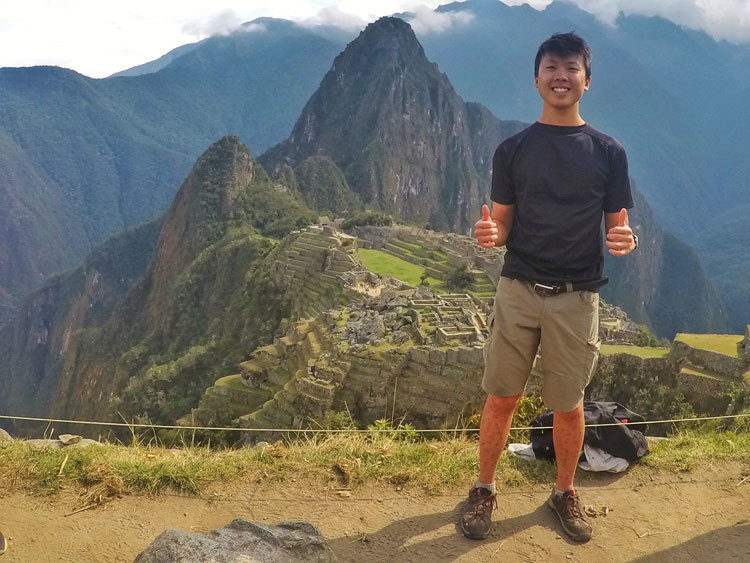
Things to Note in Cusco
*Cusco's Touristic Ticket (Boleto Turistico)
If you're staying in Cusco for more than a couple of days and intend to visit many of the attractions, consider getting the Cusco Tourist Ticket (Boleto Turistico del Cusco).
This is an integral ticket that allows you to visit 14 major sites in Cusco and comprises of a few circuits.
The Full Circuit pass is a 10-day pass (PEN $130, Nov, 2017) that allows access to the following sites:
- Pisac Ruins
- Ollantaytambo Ruins
- Chinchero Ruins
- Moray
- Sacsayhuaman
- Qenko
- Puca Pucara
- Tambomachay
- Tipon
- Pikillaqta
- Museo Historico Regional
- Museo Municipal de Arte Contemoraneo (Town Hall Museum)
- Monumento de Pachucutec
- Museo de sitio de Qorikancha
A student price for the Full Pass is PEN $70 and you have to be under 25 years old. They take the age limit seriously: the lady took a calculator and counted my age.
If you do not intend to stay for 10 days or not visit all the attractions, you can buy partial tickets for each of the three circuits above for PEN $70.
Getting to Cusco
Even though Cusco's airport is called an international airport, the only international flight it receives is from La Paz, Bolivia. If you're coming internationally, you're most likely to fly into Lima, the capital of Peru.
From Lima, you can take a domestic flight (1h 20min) or a bus (22 h) to Cusco.
It sounds crazy to be taking such a long bus ride but there are many attractions between Lima and Cusco like the desert oasis in Huacachina, the Nazca Lines and the Colca Canyon in Arequipa.
The bus terminals in Lima are far from everywhere and the transport system is confusing. A good option is to take the PeruHop bus, which lets you hop-on and hop-off along these cities, complete with English-speaking guides and movies, and ultra-tight safety precautions. If you're crossing the border from Bolivia, PeruHop helps with the border-crossing process, taking off all the hassle in the notoriously difficult border crossing. I took PeruHop when I crossed the border and it was a smooth process.
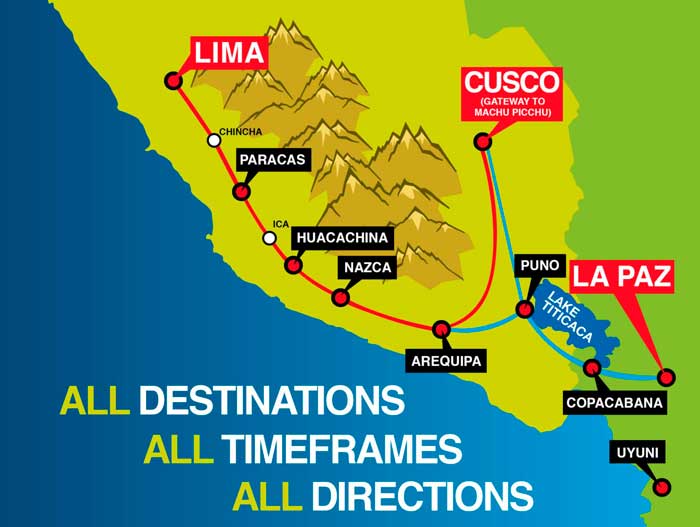
Photo: PeruHop
Getting Used to the Altitude in Cusco
The altitude of Cusco is 3399m, something not to be taken lightly.
When I did the Rainbow Mountain hike, an oxygen tank was brought along as an emergency precaution.
Physical fitness, gender and age do not determine if you will get altitude sickness (except for heart or lung problems).
My advice is to spend a few days acclimatising in the city (perhaps doing a walking tour or checking out the museums) or even at lower elevations. Take it easy, take big breaths, drink lots of water, take Diamox etc.
Try to avoid alcohol the day before doing any strenuous activities like hiking.
If all else fails, you can always rely on the secret weapon of the natives: coca tea.
Where to Stay in Cusco (Or Where I Stayed for 5 Weeks)
As one of the most touristy cities in the world, there are an endless options of hostels and hotels to stay that accommodates all budget options. A quick search on booking.com showed me over 1000 hotels. There are party hostels, quiet apartments and luxurious 5-star hotels.
Personally I think a party hostel is not too ideal if you plan to do many treks as you have to wake up early for most treks and you wouldn't want to do them hungover (especially at high altitude). Even in a normal hostel, you could hardly get a good night's rest with other people waking up at 3am for tours.
I stayed in a private apartment along Av. Tullumayo, less than 10min walk from the main square but far away from all the noise and incessant massage offers. That street is full of extremely cheap local restaurants (PEN $3.50 to $5 for a lunch set!), laundry services and grocery shops. It is also just one street away from the Salsa school!
There's a well-equipped kitchen, three bedrooms, private bathrooms and a TV. Best of all, it is only USD $10/night and the owner, Orlando, doesn't care if you invite friends over. Better than a hostel! So, if you plan to stay longer, consider this apartment.
Get 10% back from booking.com when you book with this link!
Phew!
That was a long list of things to do in Cusco. I got reminded of why I fell in love with this city and spent so much time there, just by writing this.
I hope it helped you. Please share it if you think it’d be useful for at least one person.
And now, it’s your turn.

